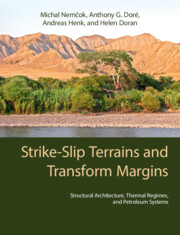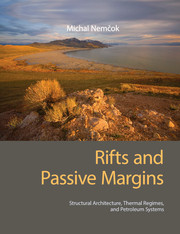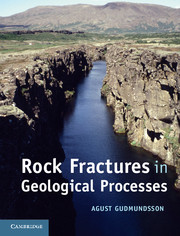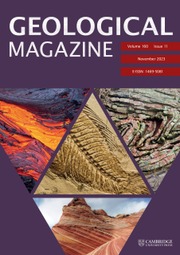Strike-Slip Terrains and Transform Margins
Many of the world's continents are bounded or traversed by vast fault networks that move laterally, like the well-known San Andreas Fault. As well as being major tectonic features of the Earth's surface, these strike-slip regimes are vitally important to the world's natural resources – petroleum, water, and geothermal energy. This book covers all aspects of these regimes; how they initiate; how they develop; and the natural resources associated with them. Numerous global case studies illustrate structural development, thermal and fluid flow implications, and commercial applicability. No other book provides such a comprehensive overview of these settings, and this volume will stand as a critical reference of the state of knowledge of strike-slip terrains and transform margins. It will be invaluable for a broad range of readers, from advanced students of geology and researchers specializing in strike-slip regimes to geoscientists and managers involved in natural resources and energy solutions.
- This volume focuses on the mechanisms of strike-slip terrains, their large-scale controlling factors and their implications, providing a comprehensive background on this widespread structural regime, describing models, physical processes and mathematical formulation that will stand the test of time
- This volume contains case studies from around the world, enabling the reader to understand the common characteristics of these structural terrains, and hence their potential applicability to new study areas worldwide
- This volume stresses the importance of synthesis as a scientific principle and shows the benefits of a multidisciplinary approach, using independent data sets, to arrive at the most likely explanation of the phenomena described
Product details
January 2025Adobe eBook Reader
9781108645942
0 pages
This ISBN is for an eBook version which is distributed on our behalf by a third party.
Table of Contents
- Introduction
- 1. Basic description of structural architecture in transform margin settings
- 2. Mechanics of strike-slip faulting and transition to drift phases
- 3. Determination of continental, proto-oceanic and oceanic crustal boundaries
- 4. Determination of timing of strike-slip events and continental breakup along transforms
- 5. Role of lithospheric composition and compositional variations in evolving structural styles
- 6. Role of pre-existing anisotropy in evolving strike-slip structural styles
- 7. Role of syn-tectonic deposition and erosion in evolving structural styles
- 8. Fluid flow systems and magmatism
- 9. Role of pre-tectonic heat flow in thermal regimes
- 10. Role of stratigraphic and structural architecture in thermal regimes
- 11. Role of syn-tectonic deposition and erosion in thermal regimes
- 12. The role of deformation on thermal regimes of transform margins
- 13. Role of fluid flow on thermal regime
- 14. Models of source rock distribution, maturation and expulsion
- 15. Models of reservoir quality distribution
- 16. Sealing characteristics
- 17. Models of hydrocarbon migration
- 18. Trapping styles
- References
- Index.








